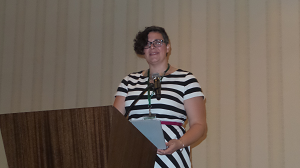The 5 Ps of a Successful Buyer-Seller Relationship (Part 2) 9/23/2015
In the first column of this series, we discussed how successful buyer-vendor partnering can be applied to the 4 Ps of marketing (product, placement, pricing, and promotion) and focused on the first P: Product.
When I was a brand-new buyer, one of the first things my boss at the time did was take me around on store visits so I could physically get to know my categories. I was overwhelmed. There were so many items and each item had its own broker or salesperson relationship to cultivate, its own promotional plan to support, and its own replenishment buying needs. I had no idea how I would do it. There just weren’t enough hours in the day!
But I quickly learned that managing all of those items in every category wasn’t as overwhelming as it seemed for a number of reasons, particularly because so many items sit in what I think of as “mail-in seats.” You know, like those great seats at the baseball game, usually right behind home plate, that sit empty because those fans are just mailing in the check for their season tickets, but never show up to enjoy the game.
For these items, the ones that sit in these mail-in seats, the vendor typically worked very hard to get placement for the item, but once they got on shelf, the vendor completely neglected their ongoing success. Sure, they “mailed in” a few eContracts for the agreed upon promotional plan. But beyond that, there was no true partnership. So often when we discuss placement with our vendors, we are merely discussing putting the item on shelf in this manner.
But for a merchant, placement is much more than that. It means maintaining that item on shelf. Responding to our ever-fluctuating business needs is much more likely to keep the items on shelf after placement. These days, we have endless data tools available at our fingertips, and we do not need to keep any item in a “mail-in seat” any longer than we want to.
A quick category analysis will show us which items are resonating with our most important consumers and which items are being supported promotionally, leading to better sales. You could easily be the casualty of this quick review if you’re not selling great items that resonate with our most valuable consumers; if you’re not following up with us quickly and efficiently; or if you aren’t listening to your merchants’ present and changing needs.
As merchants, we have to juggle dozens, sometimes hundreds of items in a given category, some of which have multiple set sizes with multiple schematics, as many as one per store. When I managed commercial bread we had a different schematic for every single store, and each had to be managed with equal importance at reset time. What made that possible? Our great vendor partnerships.
In the case of commercial bread, our category captain had the resources available to help us to create store-specific schematics, allowing us to develop sets that were mutually beneficial.
Mutually Beneficial
That’s the key term: mutually beneficial. When a merchant tells you “I can only put your item in 50 stores,” that is an opportunity for you to be a great partner to us. We aren’t saying, “You’re not good enough for all 115 of our stores.” What we are really saying is, “Your target customer only shops 50 of my stores with great frequency.” We’re looking out for your business.
And most likely, you can manage placement in those 50 stores to grow through engaged promotional activity and responsiveness to the merchant.
But if you’re just “mailing it in” after you get on shelf, you’ll never get this growth opportunity!
This column is based on a presentation Megan delivered at ECRM's Natural, Organic and Specialty Foods event, held last month in San Diego. Register for next year's events:
Natural, Organic & Specialty Foods: August 22 to 25, 2016, at Sheraton San Diego Hotel & Marina (San Diego, CA)Foodservice Natural, Organic & Better For You: November 7 to 9, 2016, at a location TBD

